Modifications To HI Torque Starter – Prevent HT SH Screws From Sudden Breakage During Engine Cranking Load.
In a previous article we praised the Hi Torque starter installation on the Twin Cam Lotus engine, the writer has recently discovered there could be an issue with breakage of the HT socket head screws that fasten the starter body to the aluminium mounting plate.
The main 3/8″ UNC bolts, bell housing to starter motor HT fasteners, rarely cause trouble, but the same cant be said about the spindly 5 mm (High tensile) socket head screws that secure the Hi Torque starter body to the aluminium mounting plate.
Explanation:
During the engine cranking start up procedure, there is a considerable amount of naturally occurring twisting motion (Torque) applied to all of the starter mounting bolts and screws, and over time, if things happen to work loose, the sudden heavy cranking motion on a high compression engine could potentially snap one of the small diameter socket head screws.
We are not saying it will happen, but it could.
There are no widely reported cases of this problem, but as more and more Hi Torque starters are installed as replacements for original starters on the Lotus twin cam, the crystal ball of probability indicates there could be potential problems.
The writer is still in favour of the installation of the Hi Torque starter to the twin cam engine.
The difference between the old and new starter is like chalk and cheese, and the hi torque wont give up, they provide huge cranking power, they just deliver, period.
But, as we have outlined above, there could be a screw breakage issue, and its better to nip a potential problem in the bud before it rears its ugly head, rather than experience an inconvenient failure while on a long trip, or when out on a fun drive day to somewhere.
The Fix – Is quite simple –
But requires some machining and drilling work, of which involves making two small steel dowels to spread the load between the 12mm thick mounting plate and the starter motor body.
The existing drilled holes in the aluminium mounting plate need to be enlarged slightly, as do the mating drilled holes in the starter body, the machined sleeve style of dowels will ensure the strongest possible strength (Shear plane resistance) at the mating face between the aluminium mounting plate and the starter body, and will help to resist the twisting (Torque) motion and potential future screw breakage while the starter is cranking the engine.
Following are some detail photographs of the modifications.
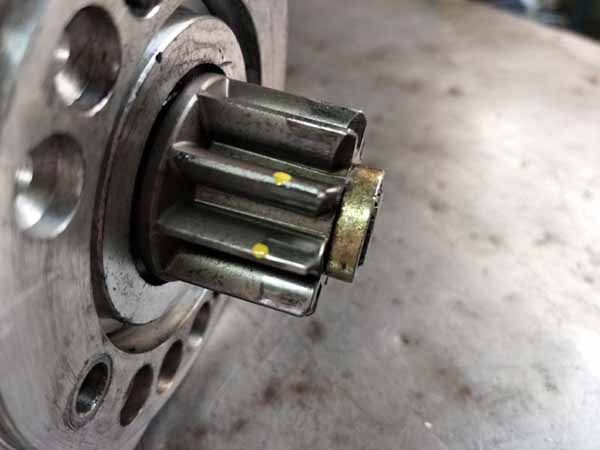
Note the depth of pinion gear mesh wear marks with the ring gear can be clearly seen in the photo above, the pinion/ring gear engagement measures ten or eleven mm, which is sufficient for positive starter pinion drive engagement.
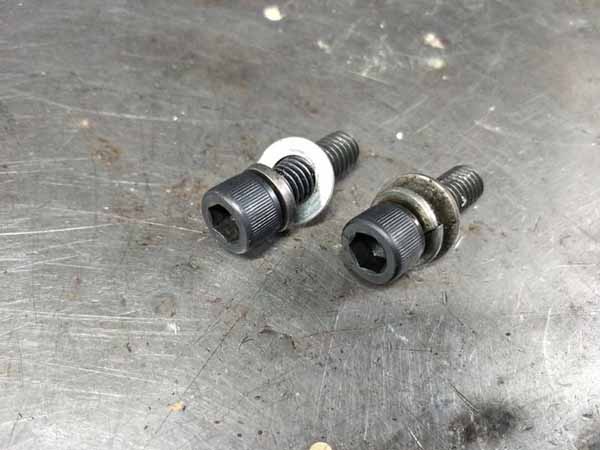
Hex drive SH studs were chosen rather than hex head bolts, as a long/slim hex driver is easier to locate onto the top holding stud.
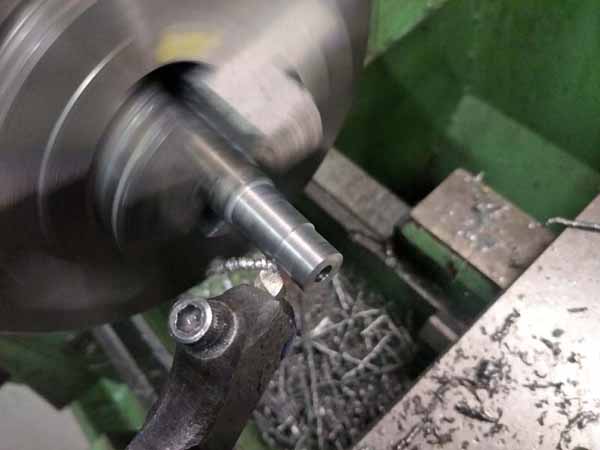
The dowels are machined from 1045 carbon steel (Mild steel) the dowels provide extra shear resistance between the starter body and the aluminium mounting plate, the principle is the same as the locating dowels placed between the mating face of the cam shaft bearing caps and the cylinder head.
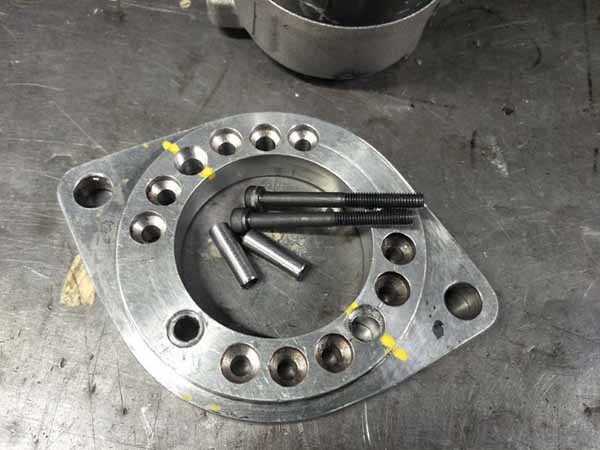
As you would understand, the 5mm Socket Head screws are not at all robust, but the designer must have thought they were adequate, but undertaking the illustrated modification will ensure that future breakage problems will not occur.
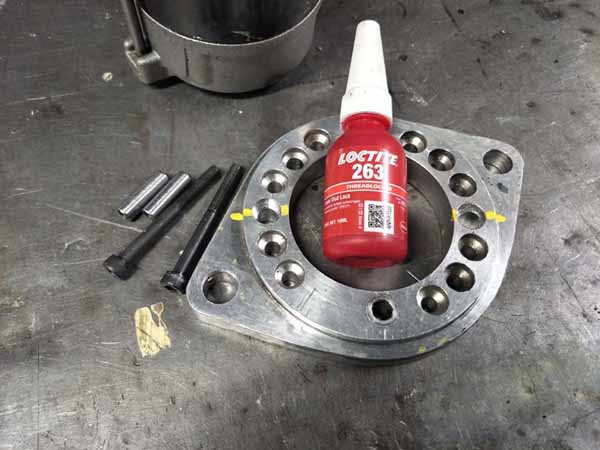
To ensure that the SH screws will not come undone due to engine vibration, a dab of Loctite 263 stud lock is applied to the thread of each screw.

The holes in the starter body need to be drilled over size, but be careful not to drill too deep and damage or remove the existing metric thread.

Observations:
This particular HI Torque starter has been in operation for about two thousand kilometres, it has provided reliable service, and now that the mods have been done, we expect an extended life from it.
While the 13mm thick aluminium mounting plate was dismantled from the starter, a small amount of scuffing and fretting marks were visible, which was obviously caused by the slight twisting movement or shunting of the starter during startup, because the holes and the HT SH screws were not a neat fit… and that is the reason the dowels have been inserted, they are made to be a hand press fit into the holes and should prevent any movement or shunting between the plate and the body during operation.
Measurements:
Drill starter body and mount plate bolt holes over size: 13/64″ (5.13mm)
Custom machine steel Dowels X 2: Length 21.mm – OD machine to 6.69mm for snug fit into body, twist drills always drill oversize, hence the size difference. (Lathe required)
Clear drill dowels: 13/64″ (5.13mm). (Lathe)
The work involved will seem to take more time than you might want to spend, but if it helps to promote starter reliability and longevity, then I am all for it. As we said at the beginning, we found no broken bolts, but we have had questions from other elan owners questioning the conversion and its reliability.
From the very first installation when the twin cam was cranked and fired up with the Hi Torque starter, it was excellent, and still is, what we have shown you here is simply an engineering precautionary measure, and a fix should problems arise.
As an old time racer said to me many many years ago -“You win the race in the workshop with meticulous preparation”
(This sounds much like the advice that Carroll Smith always gave – There Is No Magic)
Leave a Reply
You must be logged in to post a comment.